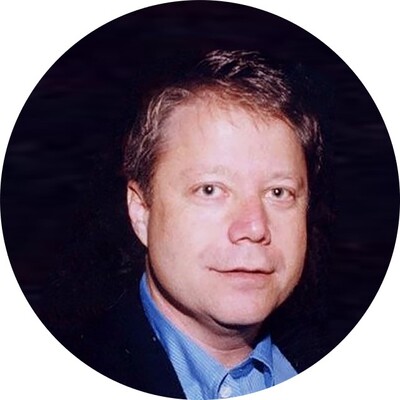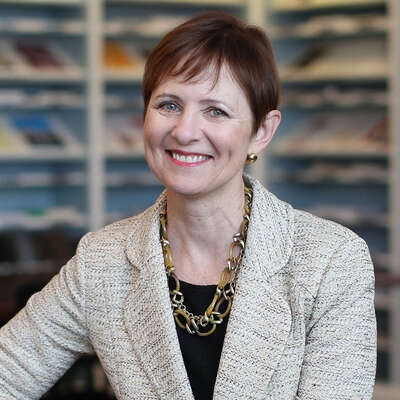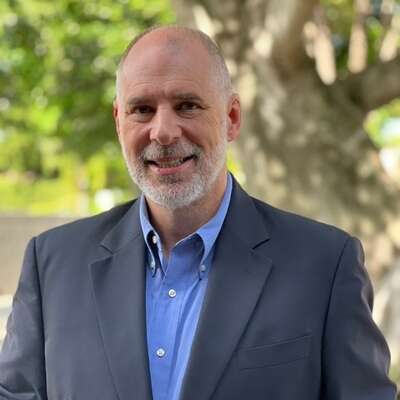
Building Tomorrow is a curated series offering exclusive one-on-one discussions with prominent executives across the real estate spectrum. Through a refined lens, each installment unpacks trends, challenges and exemplary leadership strategies steering the trajectory of specific segments within the real estate landscape, offering a concise yet comprehensive understanding of market dynamics.
This interview features Tim Hekker, Chairman and CEO of Avanti Senior Living.
A Widespread Challenge
The senior housing industry grapples with critical priorities across demand and supply, cost management, compliance, design evolutions and technology adoption while tending to talent cultivation and inspiring future leaders. Staying vigilant in this landscape remains essential for resilience and growth.
Outside the senior housing industry, many Americans are familiar with the essence of the challenge: Baby Boomers are getting older; about 12,000 people turn 65 every day. Where will they all live in their later years? Some people can afford to bring services to their home and age-in-place when they need help with the activities of daily living. Most cannot.
Those within the senior housing industry know first-hand. While the pandemic temporarily suppressed demand, the demographic wave cannot be stopped. The number of 80+ year-old Americans is growing by about 3.4% per year. That growth will accelerate to 4.8% in the second half of this decade, while senior housing new construction starts currently represent just 2.0% of existing inventory1. Supply is not meeting new demand, much less replacement of obsolete, older facilities. High interest rates, rising construction costs and a dearth of equity all suggest that new supply will continue to lag demand.
In discussion with Boyden’s Karen Kosiba Edwards and Brian Goray, Avanti Senior Living Chairman & CEO, Tim Hekker provides insights on his vision for the industry – and on the universal truths of leadership.
Discussion Highlights:
- Growth Opportunities – Senior housing executives know that consumer preferences are changing, leading to new design and service requirements. Older buildings are obsolete. There is opportunity both in absolute demand and through innovative approaches to delivering services. What do residents (and their adult children) want, and what is the competition doing?
- The Role of Women in Senior Housing – The influence of women in senior housing has become pervasive, from the C-Suite to day-to-day caregivers. At the customer level, women dominate resident demographics, while decisions about their care are often made by adult daughters and daughters-in-law. As a result, many women have found success in the senior housing business. How does a leader attract top diverse talent and inspire the next generation to the industry?
- It’s All About the People – As with many businesses today, success in senior housing is tied directly to how leaders treat their staff and how staff treats the customers/residents. Turnover of both staff and residents is particularly expensive. As in many industries, the biggest mistakes often involve hiring the wrong people. It’s easier to teach business skills than interpersonal skills, and the most profitable senior housing operators cultivate an organizational culture that values all stakeholders. Consequently, leaders in senior housing tend to be among the most well-rounded executives in any sector. Are there opportunities for talented senior housing executives to add value in other industries?
Senior Living: Economic Cycles and Talent Trends
Kosiba Edwards: It’s such an interesting time in your industry, having been through a few cycles and watched them from different vantage points. What is your perspective on where we are today?
Hekker: We’re in a great industry that certainly had its own cycles, but it’s always great to do something where you can do good for people and do well at the same time. There are not a lot of industries you can say that about.
At this point in the cycle, development has been limited due to the difficulty of obtaining construction debt and rising construction costs. That’s why we are seeing a rising tide for most senior housing properties, even if they are not great operators. When you get into it, you can really tell the difference between good operators and the companies who are just taking advantage of the rising tide.
Our business can be exciting, whether it’s management, development, design, and so on. Our cycle is going to be down for a bit, but development will pick up again in 2025 or so.

Goray: Tell us about misconceptions about the assisted living business.
Hekker: The world has changed a lot. When I first started, it was mostly nursing homes – when you aged, you went to a nursing home – and they still do not have great reputations. With all our different opportunities for seniors today, the concept of senior living itself has been changing. For assisted living – which has also been evolving – when people see how beautiful the buildings are and the services we provide, the misconceptions quickly go away. I’m sure most parents have said, “I don’t want to go to a home” because they grew up thinking the retirement home was not a good place. I do believe that aging-in-place is ideal. If your parents can stay at home and there are resources available for them to be taken care of, that’s a great thing. Keep them where they feel most comfortable as long as possible.
Goray: What are investors within the sector looking for today?
Hekker: Most investor groups have a favorite product, whether it’s data storage, etc…, and some of them are still doing that. For the most part, I see investors sitting on the sidelines in our business, because of the capital markets. If you have a product to sell, you’re not going to see many bids unless it’s opportunistic. Even if you have an “A” building that’s doing well, there aren’t as many people jumping into that party as we would hope.
Kosiba Edwards: What would the process look like if you were to start a new development?
Hekker: It starts with the feasibility studies. We look for markets that include adult children, ages 45 to 65, with higher incomes. They will bring their parents with them.
Avanti is very different from what we had built before. The properties today are high-end and hospitality-oriented with many visual drivers: restaurants, spas, and other amenities. And more than ever, it’s about finding the right people. From a career perspective, will taking care of older people ever be sexy? I don’t know, but there are some people who have a huge caring heart and they want to work with seniors. Many years ago, looking for an executive director, we often had to go outside the industry. Today, if you go out looking for someone, there’s a choice. Other companies may not have our culture, but there’s less training when we bring someone onboard. Fortunately, our corporate culture often attracts the candidates we need most.
Goray: What does the sector look like in terms of gender diversity? Is there room for improvement?
Hekker: Looking back, in the C-suite of the company I worked for earlier, there were no women. And that wasn’t a function of not wanting women, it was a function of not having anyone who met all the business criteria. Today, there are more women who are driving hard and have been learning the business.
If you dissect the business, both at the product level and the buying level, it’s mainly women. When we look for executive directors, we tend to find more women who care for our residents and are better with the employees. And in building design and interior design, we are also seeing a lot more women. We’ve gone from institutional-style buildings to a hospitality model, where you can’t tell it from a high-end resort. Women now touch a lot of parts of the business.
Kosiba Edwards: A lot of business schools now have real estate programs, but you still don’t see many women. If you’re talking to younger people in the industry, do they see real estate as having a different career risk profile? How do they weigh their options? Real estate might not look good now, but we know that will change.
Hekker: It definitely will. Not many people go into college thinking they want to be in senior living real estate. We get people who may be younger, but somehow in their life they’ve been touched by senior living. When I go to NIC (National Investment Center, an industry group devoted to senior living) conferences, there are a lot of younger people now. They’re driving the companies, the REITs … that change in demographics is clear.
Career Influences and Leadership Lessons
Goray: What were the greatest influences in your professional life?
Hekker: Truthfully, for my career, Marriott was probably the leading place of learning for me. I learned so much because of all the other divisions they had, and all the mentors they had; it was a huge learning opportunity for me. I went to their first executive development school. They took people from all their different divisions – people they thought were going to do something in their life – and brought them in for six weeks with senior Marriott people. Their system required a 20-year Marriott veteran to supervise young executives. Even though my mentor didn’t know a lot about senior living, it was a great experience. I taught him the senior housing business, and he taught me all the things I needed to be successful.
Kosiba Edwards: We used to see a lot of real estate in private hands, in large families who had holdings, and so much has gone the way of institutional owners and public REITs. As a private company, you’re not in that market – but you saw it when you were at Marriott. Tell us about any differences.
Hekker: Marriott was probably the best career choice I could ever have made, from a learning perspective. But to get things done, it took the blessings of a lot of people. Today, I like running my own show and making my own decisions about where the market is headed: how we change our product to respond to what the customers want, how we differentiate ourselves from the competition. Having been in the industry so long, I can see what factors allow us to differentiate ourselves and operate better than others in the business. I know what’s important in how a community is built and how the customers perceive it. I’m an operator at heart, but I like the development side.
Kosiba Edwards: What advice do you have for people who are about to make the leap to start their own company, where they would leave a job and go out and raise capital?
Hekker: If you have a background in the business, if you have the ability, and if you’re young -- just take the chance. If you keep living your life without taking a chance, it will never happen. It’s never easy.
Kosiba Edwards: Investors, by definition, are always looking for opportunities to put capital to work.
Hekker: Right, and you need to find investors who meet what you are trying to do. That can be a challenge. When we were raising money for my first company, we were doing it in tranches and not trying to do too much at once. It was a learning curve for me to find money in the amounts that we needed, because there are different types of players who will put in $5 million vs. $20 million. I needed to learn who those groups are and how to sell to them. In the end, they’re really buying you; buying your ideas and what you are trying to do. It’s especially challenging if you don’t have a mousetrap, a platform, sitting there already for them to invest into. I had to learn to sell “me” better.

Goray: What leadership lessons have you picked up during your career?
Hekker: Most people are lucky to have one mentor, and I’ve been blessed with several of them at different times in my life. I don’t know if I was easy for those people to take me under their wing, but I did accept every opportunity as it came. I had two mentors in senior living and one who was an investor – and all were good friends as well. They were all older and weren’t afraid to direct me down the right path, whether it was at Marriott or starting my own company.
Kosiba Edwards: What has your experience been with recruitment?
Hekker: In the last company I started, I used a recruiter I really got along with. They knew what I was looking for, and I was able to get three key positions filled within six months; they were such huge drivers and good people – much smarter than me because they all retired after we sold that company! Finding the right recruiter who knows your business is important because it’s hard to do it yourself. If I were to take on a large acquisition today, I would want a relationship with an executive recruiter to help with the executive team. And having a recruiter who knows people out there who are very good at what they do and would be open to a new opportunity; that’s a big thing.
Goray: What distinguishes Avanti is your focus on people. Who you hire, how you hire them, and how you treat your people. Is that fair?
Hekker: Certainly. You can build the best building and be in the best location, but you’re not going to be close to home run territory if you don’t have the right people. The right people are out there; you just have to be willing to look, both at the property level and the home office level.
Ultimately, people go to work wanting to do well. And they do well if you give them the right tools, growth opportunities, and express your appreciation for their efforts. I do think the market has changed in that fewer people want to move for a job and make major changes in their life for a career path. Today, the relocation part of the equation has completely changed.
About the Industry:
Senior housing today includes over-55 communities, independent living (with basic services), assisted living (with support for activities of daily living), memory care, and skilled nursing (for residents who need special care). Some senior living communities include more than one of those product types.
Executive Biography:
Tim Hekker has been in the senior housing business since he worked odd jobs around a nursing home as a teenager before earning a degree in long term health care. In the early 1980s, Tim was hired to manage the development of a struggling retirement center. Realizing that the initial concept had not been well thought-out, Tim created a new plan to market and manage the building. Eventually, he joined a company with a distressed senior living portfolio, led the turnaround of its properties, and sold the company to Marriott. For 10 years at Marriott, Tim developed continuing care retirement communities (CCRCs), retirement condominiums, and other senior living buildings. He then became head of operations at a company coming out of bankruptcy, where he led the turnaround of 44 underperforming CCRCs – and sold the stabilized properties to Marriott. After the transition, Tim founded Hearthstone Senior Living, where he built 32 properties in 10 states before selling the company. In 2012, Tim founded Avanti Senior Living, which developed and operates seven assisted living buildings in Texas and Louisiana.
1 National Investment Center for Seniors Housing and U.S. Census Bureau forecasts.






